This is exciting! We’re driving the pre-production Kia Seltos at the company’s car manufacturing facility in Anantapur, Andhra Pradesh before the mid-sized SUV is launched in India.
Being a sister-brand of Hyundai Motor India, the Kia Seltos is based on the Hyundai Creta platform and both the cars borrow some parts from the common basket. So, there is a feeling of déjà vu when you get into the cabin. In fact, the new petrol and diesel engine options that the Kia Seltos has brought with it are expected to be used in the BS-VI version of the Hyundai Creta.
[metaslider id=”22998″]
Design
The Kia Seltos carries an aura of a confident SUV with bold creases and sharp lines. The highlight being the sweeping headlamps which get the “crown jewel”-inspired lighting and the unmistakable tiger nose grille. Talking about which, Kia have roped in the talented and young Tiger Shroff as the face of the brand and, apart from the actor’s fan-following, his name is surprisingly in sync with the company’s favourite wild animal.
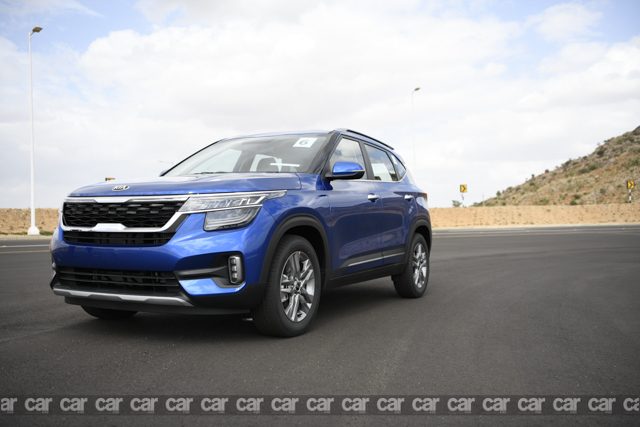
To my eyes, the front design of the Kia Seltos looks rather busy with chrome highlights, shiny black grille, brush metal highlights on the bumper, and vertically stacked “ice-cube” fog-lights. There are two trim lines to choose from: the standard Tech Line and the more youth-oriented GT line. The GT gets red highlights on the sump-guards and the side cladding, 17-inch crystal cut alloy wheels with red brake calipers, and even some GT badging.
I prefer the side profile of the Kia Seltos with clean lines and play of colours. The contrasting black bodywork and chrome accents bring out the body colour, while the black A-pillar creates the floating roof impression very well. Sleek roof-rails, a shark-fin antenna, and the spoiler look sporty, along with the sharp tail-lamp design and the faux-twin-exhaust on the rear bumper. Overall, it’s a modern and refreshing take on a crossover design by Kia, something for which the brand is well appreciated worldwide.
(Also read: Kia Seltos Variant Revealed)
Interiors
The Selto’s cabin has a distinct Kia aura which is very different from what we’ve seen on the Creta. Yes, some bits are shared but the overall treatment is different. Things like the sharp rectangular console on the dashboard make the cabin unique. This houses the driver’s information display and the large touchscreen of our top-of-the-line trim test cars, makes it stand apart. Premium beige-and-black treatment of the cabin looks nice, while the GT Line buyers can opt for an all-black cabin with red contrast stitching and sportier seat upholstery. Although my pick is the hexagonal stitching on the seats of the Tech Line more.
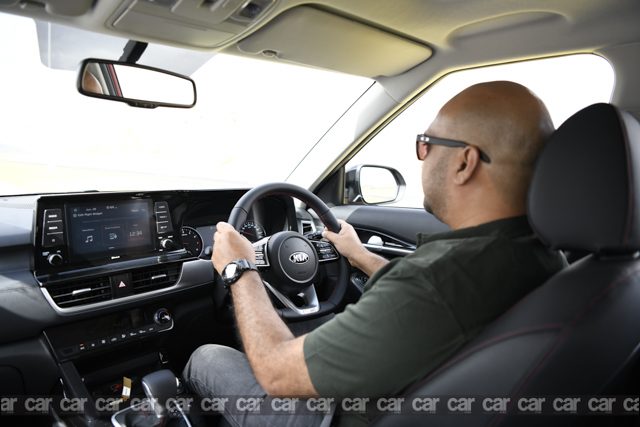
The door-panels get an interesting Fractal pattern which comes with mood lighting and there’s ample space to stow water bottles. The numerous cubbyholes include space for two phones on the centre console and a couple of coffee cup-holders. And the quality of materials and craftsmanship are hard to fault.
Features
Top variants also get smart “D” cut (flat bottom) steering wheel, eight-inch heads-up display and eight-way adjustable driver’s seat. The list of features is practically never-ending. It also gets an LG-sourced 10.25-inch touchscreen infotainment system and a very informative driver’s information console with alerts for things such as tyre pressure and even turn-by-turn navigation. The infotainment lets you manage the car’s setting right from the way it delivers the information to controlling the air-purifier and, of course, making most of the sublime 400-watt, eight-speaker Bose music system. The system monitors the vehicle speed and adjusts the volume automatically. The infotainment system offers split-screen function, integrated 3D navigation system and Android Auto and Apple CarPlay connectivity. The non-Bose variants get a very decent Arkmays music system.
Connect Car
Since everyone opts for connected cars these days, Kia have joined hands with Vodafone and Amazon cloud to bring UVO Lite and UVO Connect services to India. The UVO Lite mobile app allows the owner of the Kia Seltos the convenience to control the sound system through the phone. The UVO Connect has tonnes of features ― 37 to be precise. Owners get three years’ free subscription that includes navigation, safety and security, vehicle management, remote control, and convenience. I’m sure you don’t want me to list all of them here right now, but the highlights for me are obviously reliable navigation with live traffic updates, and the fact that the car’s key comes with a panic button which alerts the company’s call centre and sends an SMS notification to the pre-set emergency contacts. You can share your car’s location with others and set up geo-fence and speeding alerts. In case your car gets stolen, it can be tracked and you can even remotely immobilization it to foil the thief’s getaway plan. Yes, my hunch is that Kia have hired the talented Mr Q from the James Bond series.
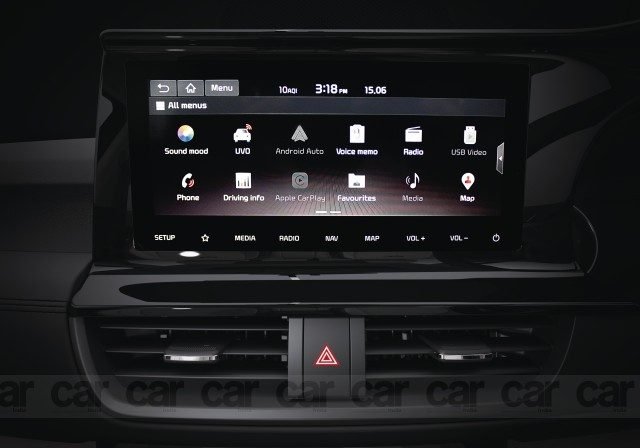
In terms of features, the Kia Seltos is close to perfect. Just that the front passenger seat can only be adjusted manually. And since the seat height can’t be altered, it feels rather high. I found that the automatic climate control, which has been enhanced for India, did a good job of cooling the cabin. Maybe, Kia could have opted for more flexibility in the passenger seat instead of making it perforated with cooling vents. The good news is that the Kia Seltos gets an air-purifier which is neatly integrated within the front arm-rest.
Cabin Space and Seating
One of the reasons mid-sized SUVs are so popular in India is that they provide uncompromised rear seat comfort. The Kia Seltos is no exception to this virtue. Rear-seat passengers are driven in good comfort with ample knee-room and a relaxed sitting position. The rear seat can be inclined a couple of notches to catch a nap on longer drives. There’s no visible cost-cutting as the Kia Seltos offers rear a-c vents, centre arm-rest and segment-first features such as 60:40 split seats and adjustable centre head-rest. It’s Kia’s first car model for India and, clearly, they’re leaving no stones unturned.
Engine and Performance
The powertrain line-up of the Kia Seltos includes two new petrol engines and a new diesel. All of them efficient, clean, and ready for BS-VI switchover right from launch. I got a chance to sample all of them, albeit very briefly, at Kia’s test-track at their Anantapur facility and am sharing my first impression from those short test-drives.
Petrol 1.5-litre Petrol: I started with the Kia Seltos 1.5-litre naturally aspirated petrol that makes 115 PS and 144 Nm of torque and is offered with the option of a six-speed manual or a CVT. The entry-level offering is pretty smooth and likeable immediately for its refinement and low-end performance. The gear-shifts in the manual version are slick and the clutch is light to operate, making it a good everyday city car. With a claimed time for 0-100 km/h of 11.8 seconds, it delivers respectable performance for the buck, as am expecting the base variant to be priced aggressively. For more convenience, you can opt for the CVT version which delivers power in a relaxed and predictable fashion. As long as you’re easy on the gas, it offers efficient driving, which is ideal for your usual city runabouts. Drive it with a heavy foot and the engine sounds strained and the elastic trait of the CVT becomes more evident.
1.4-litre Turbo-Petrol: If you prefer a more enthusiastic drive, then Kia also have the option of a peppier 1.4-litre GDI engine. This four-cylinder turbo-charged petrol punches out 140 PS and has an impressive torque output of 242 Nm which gives it a nice and meaty mid-range and better outright performance. The Kia Seltos turbo-petrol can be had with a smooth shifting six-speed manual or a modern seven-speed dual-clutch transmission. Obviously, the DCT version will demand quite a premium compared to the other variants of the Seltos, but it remains the most desirable option. Simply because it has the best mix of performance and convenience. The meaty torque helps disguise the turbo spike, while the DCT delivers power seamlessly. Step hard on the gas and the motor revs quickly with a likeable sporty note. Kia engineers claim that the Seltos 1.4-litre GDI can zap from 0 to 100 km/h in just 9.7 seconds and it surely feels quick. Now I am extremely keen to test it when we get the car for a road test.
1.5-litre Diesel: Lastly, and more importantly, I had a go in the Kia Seltos diesel variant, which is the 115-PS, 1.5-litre VGT. Usually, SUV buyers are traditionally inclined towards oil-burners and, going by my short drive experience, this is one of the best in the segment currently. Yes, it’s refined and frugal and all that, but the biggest virtue is that it’s so effortless to drive. The 250 Nm of torque flows in early and remains flat so you can ride on that wave till the revs come close to the red-line. Then there’s the option of buying either a six-speed manual or opting for the six-speed torque converter, both of which dish out linear power delivery and brisk performance. And like the other two automatic variants, the diesel AT gets three driving modes (Normal, Eco, and Sport) along with three traction control settings, including Mud, Wet, and Sand. This version is a complete all-rounder which will live up to your demands, be it city or highway, efficiency or performance.
Suspension and Ride
The three engine options of the Kia Seltos have similar suspension systems, but the set-ups are a tad different. The petrol versions felt a bit softer sprung compared to the diesel; the latter felt more taut and composed. This is another reason why I enjoyed driving the Seltos diesel even more. All the three versions seemed to be up to the mark in terms of ride quality and passenger comfort.
Handling
Kia have also worked upon the steering feedback of the Kia Seltos and brakes to give the crossover sportier dynamics. The oval test-track had a speed limit of about 80 km/h which I tried to maintain… on most occasions. It could carry decent speed as I chucked the car into corners and it showed little traces of understeer. Another massive improvement of the brakes compared to the Creta. The Seltos has disc brakes on all four wheels (16-inch front, 14-inch rear) which give it a confident bite. The engineers have also worked on the mechanism to reduce juddering during hard braking. The crossover also remains pretty composed at higher speeds due to the low 0.35 drag coefficient achieved through a more aerodynamic underbody design.
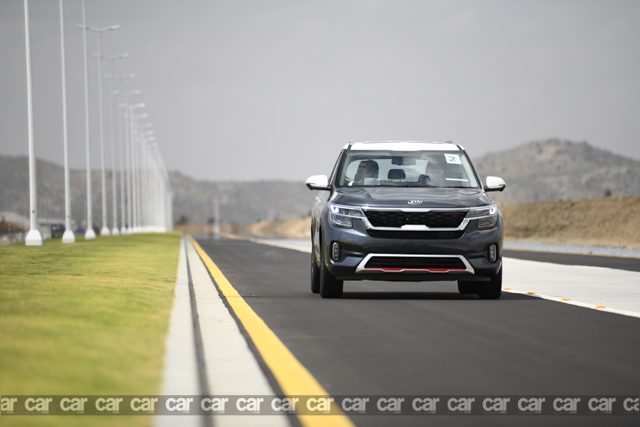
Conclusion
There are these numerous small and big improvements that make the Kia Seltos a very promising car. The biggest advantage Kia has is that they have the Hyundai Creta as a ready case study. They’ve worked on the weakness and enhanced the strengths. Most importantly, the Kia Seltos will be priced very aggressively with a marginal premium over the Creta when it is launched on 22 August. Now we’ just hope an interesting new car like this revives the car buying sentiments in India.


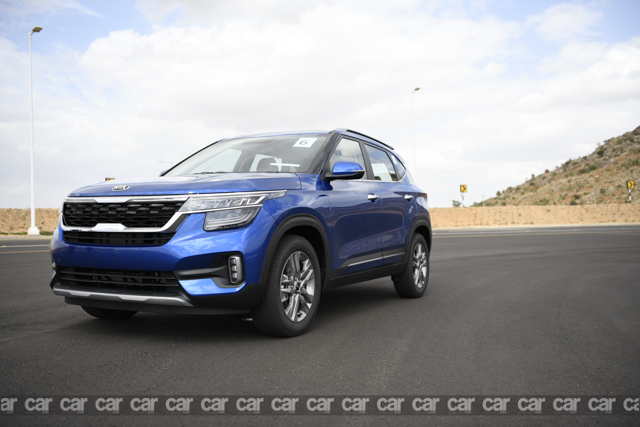


















Leave a Reply